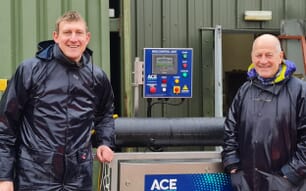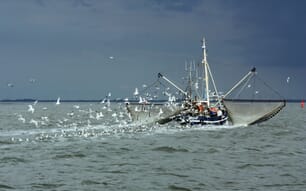Aquatic agricultural systems (AAS) are agro-ecological systems that occur widely along freshwater floodplains, coastal deltas, and inshore marine waters (WorldFish 2011a). AAS productivity derives from terrestrial and aquatic plants and animals, both wild and cultivated. An estimated 700 million poor and vulnerable households depend on aquatic agricultural systems to farm, catch, or gather produce, and it is estimated that many more are indirectly reliant on these systems for food and other ecosystem services (aas.cgiar.org). However, aquatic agricultural systems are subject to environmental fluctuations, and social and economic drivers, that can drastically alter food productivity and access to that productivity (WorldFish 2011a; Ratner et al. 2012).
The ecosystems upon which aquatic agricultural systems are based support biodiversity and ecosystem services such as nutrient assimilation and cycling, soil formation, water provision, coastal protection, and nursery grounds for aquatic animals —services which are of paramount importance for sustainable food production in farming landscapes (Amilhat et al. 2009; Hill & Mustafa 2011). However, intensive exploitation of natural resources and unsustainable farming practices have led to biodiversity loss, environmental degradation, and loss of ecosystem function, diminishing productivity in many aquatic agricultural systems (Foley et al. 2005; Datta et al. 2012).
Simultaneously, reliance on aquatic agricultural systems for food production and other services is increasing. To meet the demand of an expanding global population, food supply will have to increase by 70 per cent by 2050 (Pretty et al. 2011). Declines in AAS productivity will increase the gap between productivity and demand, further threatening the food security of millions of poor and vulnerable people (Pretty et al. 2011).
This situation has sparked resurgent investment in agricultural intensification, taking into consideration the valuable lessons that came out of the Green Revolution (Pingali 2012). During the Green Revolution (1966–1985), agricultural productivity was enhanced through development of new technologies, increased external input regimes, and improved access to markets (Pingali 2012).
However, efforts were focused solely on increasing productivity and failed to consider implications for the wider development context. As a result, there were unintended environmental and social repercussions (Pingali 2012). Green Revolution researchers focused their efforts on more favorable ecosystems (and by default, richer farmers), where increases in food production were easily attainable, with less effort focused on the more marginal ecosystems where poorer farmers contend with infertile soils or erratic rainfall (Pingali 2012).
Agricultural intensification resulted in pervasive chemical run-off, soil structure degradation, loss of biodiversity, and loss of fertility in some regions (Burney et al. 2010). Policies such as fertilizer subsidies and a lack of awareness of the potential environmental impacts exacerbated the situation by allowing uncontrolled use of external inputs (Pingali 2012). In response to these negative effects, sustainable management of natural resources is now recognized as a key foundation for increasing productivity in agricultural systems, and similarly in aquatic agricultural systems.
Improvements to AAS productivity are often described in terms of increasing yields via new farming practices, higher-yielding varieties, and natural resource management strategies. However, relatively little attention has been given to the factors that influence whether poor households benefit from productivity improvements. Focusing on benefits to poor households, using a livelihood approach, has become a useful tool to capture these factors and understand productivity outcomes for poor people’s lives, well-being, and vulnerability (Ashley & Carney 1999; Adato & Meinzen-Dick 2002). According to Carney (1998), “a livelihood comprises the capabilities, assets (including both material and social resources) and activities required for a means of living.”
Livelihood approaches are considered useful because they seek to gain an understanding of people’s assets or capital endowments (human, social, natural, physical, and financial) and how these are transformed into positive livelihood outcomes through a range of livelihood strategies (Ashley & Carney 1999). People’s access to different levels and combinations of assets (capitals) is a major influence on their choices of livelihood strategies (Scoones 1998). Therefore, differences in the characteristics and levels of assets can lead to disparities within a household or community regarding who benefits and who is disadvantaged through a productivity intervention. This paper takes guidance from the livelihoods approach alongside reports of increased productivity, in an attempt to glean information regarding access to assets that are reported to affect the benefits received from productivity interventions.
The AAS programme has a goal of improving the well-being of AAS-dependent peoples by bringing together the strengths of CGIAR agricultural research with those of partners in research and development. The programme has six objectives, of which the first is “increased benefits to AAS-dependent households from environmentally sustainable increases in productivity.” One of the key research themes of the programme also concerns “sustainable increases in system productivity.” The objective and research theme crucially link the elements of increased benefits to households and increases in system productivity.
The purpose of this review is to bring together current knowledge of the relations between these two dimensions, and to draw together lessons relevant to achieving key livelihood or development outcomes; that is, improvement of household income, nutrition, and food security.
The review is organized into three sections. First, we provide a summary of household-level asset bases and livelihood strategies in the five focal countries of this review—Bangladesh, Cambodia, the Philippines, Solomon Islands, and Zambia—and provide an inventory of yield and productivity interventions in aquatic agricultural systems in each country. Second, we review the development outcomes of a selection of productivity-related interventions in each country. And third, we present a synthesis of the lessons and challenges of increasing AAS productivity and the factors that influence the uptake, adoption, and development outcomes of these interventions.
The case studies considered yield and productivity interventions. Four research questions were used to guide the analysis of each:
- How and to what degree do interventions increase crop, fish, and livestock productivity in different aquatic agricultural systems, and are these increases sustainable?
- What productivity gains have been realized by integrating crop, fish, and livestock production?
- What are the development outcomes associated with productivity interventions, and which social groups benefit from each intervention?
- How have AAS technologies and management practices been disseminated and adopted for the benefit of smallholder producers?
August 2014




